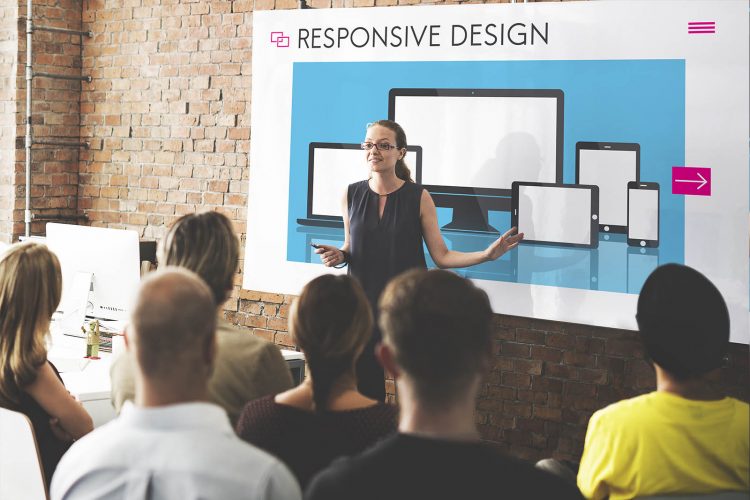
Figma (especially with Flowchart Kit) has rapidly become one of the most popular tools in web design, revolutionizing the way designers collaborate, create, and prototype websites. As the digital landscape evolves, Figma’s cloud-based platform offers designers real-time collaboration, a streamlined interface, and features that make designing websites intuitive and efficient. Alongside Figma, platforms like UXFlow have emerged, further enhancing the design process by providing valuable resources like templates, wireframes, and user flows. This article explores the significance of Figma in web design and how websites like UXFlow.co assist in optimizing design workflows.
The Evolution of Figma: A Collaborative Web Design Powerhouse
In the past, web designers relied heavily on tools like Adobe Photoshop or Sketch to create web interfaces. While effective, these programs had limitations, particularly when it came to collaboration and real-time feedback. Figma changed the game by being cloud-based, allowing multiple users to work on the same design simultaneously from different locations. This feature alone has made it the go-to platform for teams, both large and small.
Key Features of Figma in Web Design
- Real-Time Collaboration: One of Figma’s standout features is its ability to support multiple designers working on the same file simultaneously. This real-time collaboration makes it ideal for web design teams who need to share ideas, make adjustments, and get immediate feedback from clients or team members. Designers can leave comments, suggest changes, and tweak the design while other users watch these updates live, drastically reducing the back-and-forth traditionally required for approval.
- Vector-Based Design: Figma’s design tools are vector-based, meaning that elements created in Figma can scale up or down without losing quality. This is crucial for web design, as websites need to be responsive and look sharp across a range of screen sizes, from mobile to desktop.
- Prototyping Capabilities: Beyond static designs, Figma enables designers to create interactive prototypes. These prototypes can simulate user interactions like clicks, hovers, and navigation between pages, giving clients or stakeholders a realistic preview of how the website will function once it’s live. This functionality eliminates the need for additional software and helps designers test user flows and improve UX before development begins.
- Component Libraries: With Figma, designers can create reusable components like buttons, headers, and footers, ensuring consistency across all pages of a website. These components can be easily updated across the entire design, which saves time and ensures that any changes are reflected throughout the project.
- Cross-Platform Usability: Figma runs on any browser, making it platform-independent. Whether you’re on a Mac, Windows, or even Linux, you can access your projects without the need for installations. This accessibility further enhances collaboration, as team members don’t need to worry about compatibility issues.
The Role of UXFlow.co in Optimizing Figma Workflows
While Figma provides an excellent foundation for web design, additional tools and resources can help designers work even faster. UXFlow.co is one such platform that complements Figma by offering a wide range of templates, wireframes, and user flow diagrams tailored to Figma users. This enables designers to start projects quickly, with well-thought-out frameworks that reduce the time spent on repetitive tasks.
Key Benefits of UXFlow.co for Figma Designers
- Pre-Made Templates: UXFlow.co offers a library of pre-designed templates that integrate seamlessly with Figma. These templates cover everything from landing pages to detailed user flows, saving designers from having to start from scratch. With ready-made assets, designers can focus on customizing and refining their projects rather than building from the ground up.
- Wireframes for Faster Design: Wireframing is an essential part of the web design process, allowing designers to outline the structure and layout of a website before diving into the final design. UXFlow.co provides Figma-compatible wireframes, which can be quickly imported and modified to suit the specific needs of a project. This helps designers and clients visualize the layout and functionality of the website early in the design process.
- User Flow Diagrams: Creating clear user flows is critical to ensuring a website’s navigation is intuitive and user-friendly. UXFlow.co offers a collection of user flow templates that make it easier to map out how users will interact with different parts of the site. These user flows can be shared and reviewed within Figma, keeping the entire process contained in one platform.
- Customizable UI Kits: UXFlow.co also provides UI kits that include pre-designed buttons, forms, and other interface elements. These kits are not only visually appealing but are also designed with user experience (UX) in mind. By integrating these elements directly into Figma, designers can ensure that their designs are both functional and aesthetically pleasing.
The Impact of Figma and UXFlow.co on the Design Industry
As web design continues to evolve, the integration of tools like Figma and UXFlow.co is streamlining the design process in ways that were previously unimaginable. The collaborative nature of Figma has reduced the time it takes to produce high-quality web designs, while platforms like UXFlow.co offer supplementary resources that boost productivity and creativity.
Efficiency in Design:
With the combination of Figma’s real-time collaboration and UXFlow.co’s ready-made resources, designers can significantly reduce the time spent on the initial phases of a project. This allows more time to focus on customization, user testing, and refining the final product.
Improved UX and UI Consistency:
By using components, UI kits, and user flow diagrams, designers ensure that their websites are consistent in both design and functionality. This improves the overall user experience and leads to websites that are more intuitive and easier to navigate.
Collaboration and Client Involvement:
With Figma’s collaborative features and UXFlow.co’s templates, clients can be more involved in the design process. They can leave comments directly on the Figma board, suggest changes, and see live updates, making the entire design process more transparent and interactive.
Conclusion
The web design landscape has been transformed by tools like Figma and platforms like UXFlow.co, which work hand-in-hand to enhance creativity and productivity. Figma has revolutionized how teams collaborate, while UXFlow.co provides the tools and resources necessary to kickstart projects, improve workflows, and ensure consistent and efficient design practices. Together, they represent a modern approach to web design that is fast, flexible, and highly effective.
For web designers looking to improve their workflows and deliver better projects, leveraging Figma in conjunction with resources like UXFlow.co is the way forward. These platforms not only make the design process more efficient but also elevate the overall quality of web projects.

